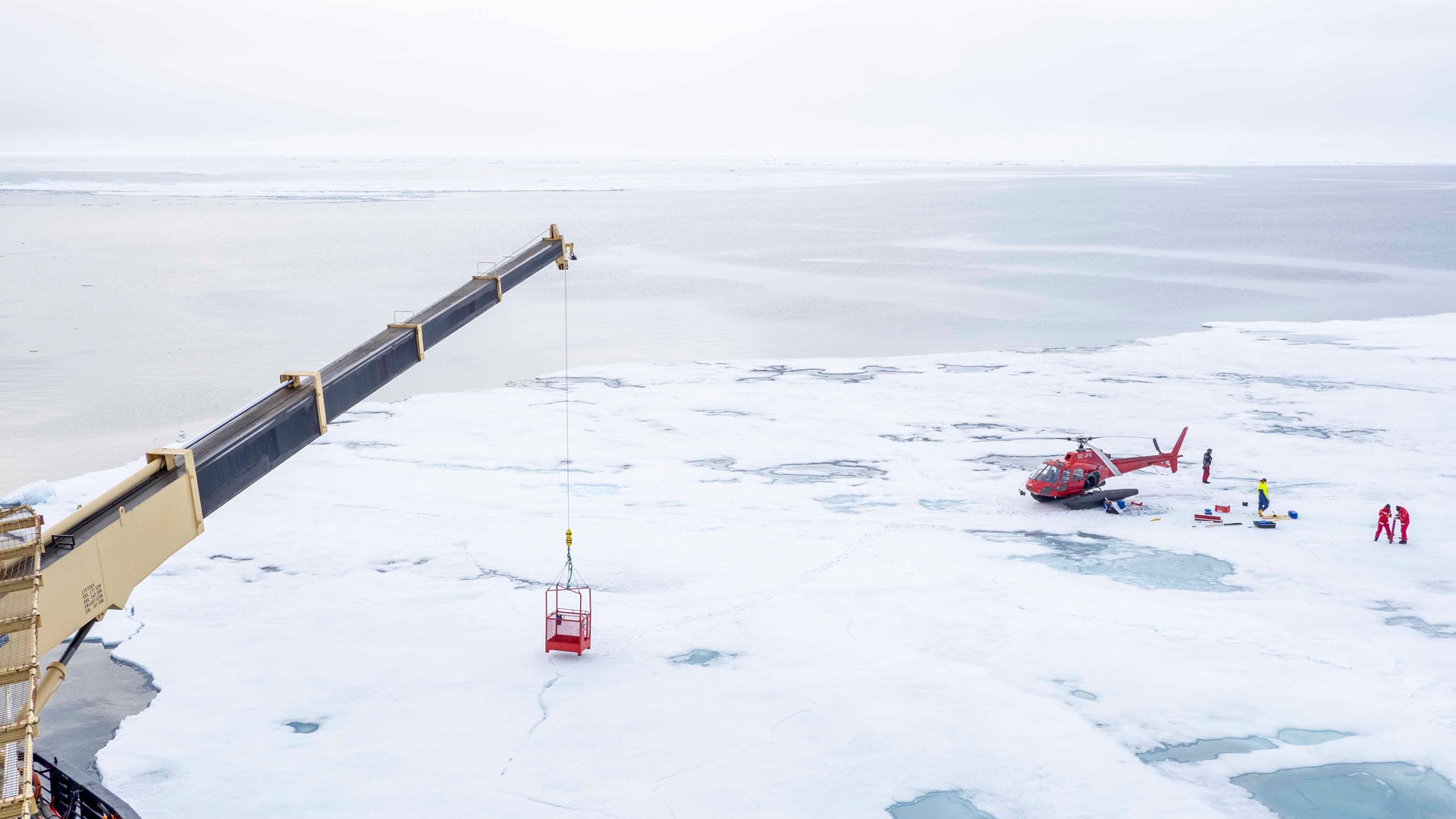Early expedition to study the onset of melting season in the Arctic Ocean
 Work on the ice during the Synoptic Arctic Survey research expedition carried out in the Arctic Ocean with the icebreaker Oden in 2021. Photo: Polar Research Secretariat
Work on the ice during the Synoptic Arctic Survey research expedition carried out in the Arctic Ocean with the icebreaker Oden in 2021. Photo: Polar Research Secretariat
Every summer, part of the Arctic sea ice melts away, and the melting season is becoming longer. Since the end of the last century, the area covered by ice at the end of summer has gradually decreased, and today, the area is less than half of what it was at the end of the 1970s. To study the arrival of spring in the Arctic – when it comes and how it happens – this year's research expedition with the icebreaker Oden is being carried out earlier than usual.
‒ We know with great certainty that the melt season will begin when we are there. With the help of advanced weather forecasts, we will see where we need to be to study what happens when spring comes to the Arctic five to seven days in advance, says Michael Tjernström, Professor of meteorology at Stockholm University. He leads the ARTofMELT 2023 expedition together with colleague Paul Zieger, Senior lecturer in experimental atmospheric science at Stockholm University.

Lack of surveys since the 1990s
Observations of the central Arctic, in general, and the atmosphere, in particular, are rare. Most detailed observations come from icebreaker expeditions usually carried out during the late summer and autumn. The onset of the melting season has not been studied in detail since the late 1990s, and this was under conditions that differ dramatically from now.
On land, spring comes gradually, but the researchers hypothesise that the transitions between the seasons in the Arctic Ocean involve a more abrupt, sudden, change from winter to summer, from freezing to melting season. It is expected to be triggered by strong inflows of warm and moist air from ocean areas further south, interacting with feedbacks between the frozen sea-ice surface and the atmosphere. These so-called atmospheric rivers occur at all times of the year but are most common in winter.
‒ When we read in the media that it has been near zero centigrade at the North Pole in the middle of winter, it is because of such an event, Michael Tjernström explains.
‒ During the expedition, we want to study the effect the warm air has on the sea ice and snow and how the air changes when it comes in over the cold sea ice. Primarily, it is cooled from below, and clouds or fog often form. Clouds, in combination with the warm air then lead to the surface warming up. But the southern air currents can also carry with them other properties from the south, for example, high concentrations of various types of microscopic particles (aerosols) important for how clouds form. Even air pollution can follow, says Paul Zieger.

Some studies suggest that these warm air flows become more frequent, stronger and longer lasting in a warmer climate. To more reliably assess the climate of the future – in the Arctic and globally – computer models are needed in which both these air currents and their effect on the surface are correctly described.
‒ Therefore, we must have more and better observations from poorly documented places and times. Ultimately, the goal is to increase knowledge of the Arctic climate system, and we do that by going there during a time of year with very few direct observations, says Michael Tjernström.
An expedition with a flexible route
The icebreaker Oden will be located somewhere inside a "triangle" between northeast Greenland, northwest Svalbard, and the North Pole. Here, the researchers maximise the possibilities of capturing inflows of warm air of different origin. But moving according to the weather also present challenges.
‒ It may sound simple, but it is complicated. A cornerstone is getting access to advanced weather forecasts from our land-based partners. This poses a communication challenge as we do not have access to the internet this far north. Because we can only move quite slowly, we also need to have a working decision-making strategy to avoid losing time. Finally, we also need to be able to move Oden to where we want to go. Before the ice starts to melt, it is the most difficult to navigate. Then, of course, keeping our spirits up may become challenging if nothing happens and we end up in the same place for several weeks. After all, the atmosphere can "decide" that there will be no warm air inflows for several weeks. This is also something we must plan for, concludes Michael Tjernström.
Facts
ARTofMELT is organised by the Swedish Polar Research Secretariat and is mainly financed through the Secretariat's own grants but also through international collaborations.
The icebreaker Oden is owned by the Swedish Maritime Administration but is used by the Swedish Polar Research Secretariat during the summer for expeditions to the Arctic Ocean.
